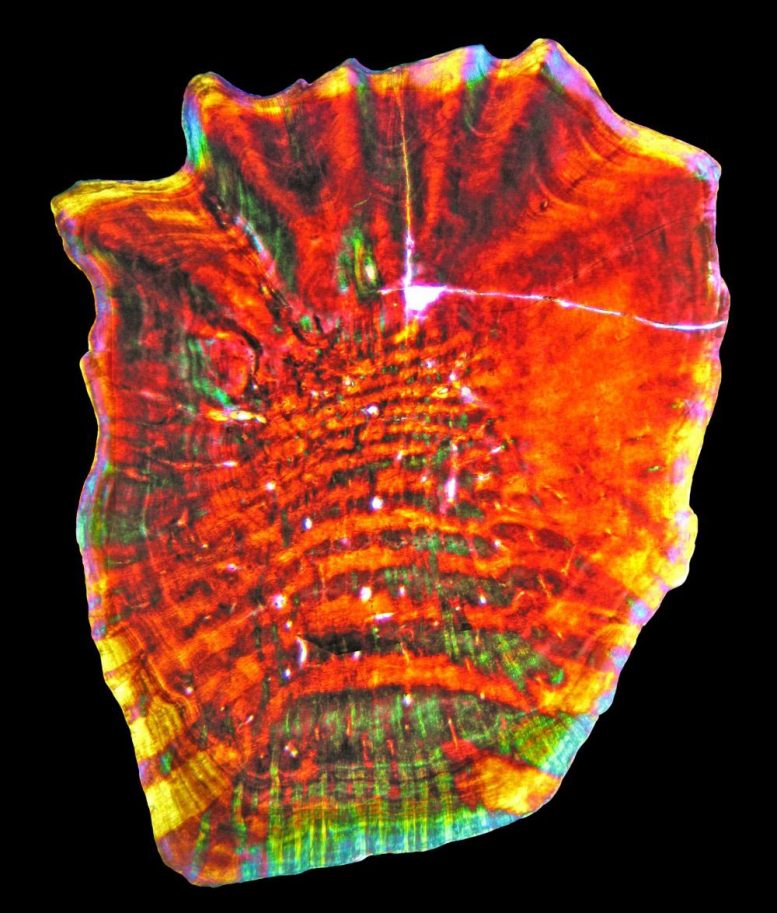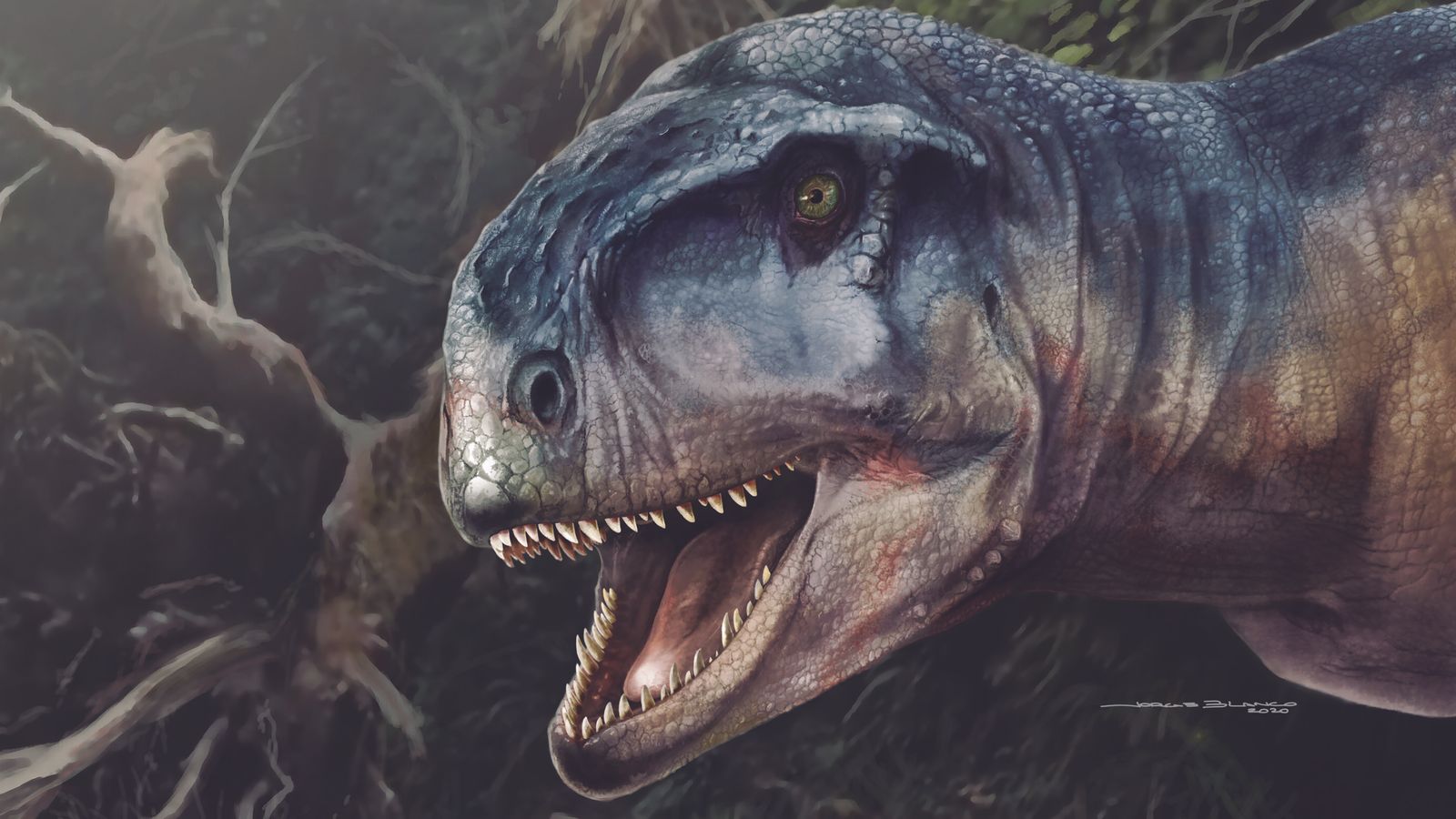Reconstrucción paleoambiental de la comunidad faunística del Cretácico Superior en Cerro Fortaleza, que incluye un anquilosáurido nodosáurido y varios peirosaurios notosuquios. Crédito de la foto: Ilustración del paleoartista Jorge González
Los restos incluyen los primeros dinosaurios acorazados de la región y cocodrilos terrestres.
Donde los esqueletos son raros, los dientes aislados pueden profundizar nuestra comprensión de los antiguos ecosistemas dominados por reptiles, según un estudio publicado el 8 de septiembre de 2021 en la revista de acceso abierto MAS UNO por Ariana Paulina-Carabajal de INIBIOMA (Instituto de Investigaciones sobre Biodiversidad y Medio Ambiente) y CONICET (Consejo Nacional de Investigaciones Científicas y Técnicas), Argentina, y colegas.
América del Sur alberga algunos de los yacimientos de fósiles más importantes del mundo para comprender la historia de los dinosaurios y otros[{” attribute=””>Mesozoic reptiles. However, the Late Cretaceous Cerro Fortaleza locality in Santa Cruz, Argentina is surprisingly sparse. Though other nearby sites preserve diverse reptile assemblages, skeletal remains at the Cerro Fortaleza locality are limited almost entirely to one type of dinosaur: the giant sauropod Dreadnoughtus. In this study, researchers expand the known reptile diversity at this site using teeth.

Ankylosaur osteoderm, thin sections. Credit: Microscope photographs by Dr. I. Cerda
In December 2016, fossil excavations at Cerro Fortaleza recovered 13 teeth and 9 tiny osteoderms (armor-like skin bones) representing a variety of ancient reptiles. Identification of these remains confirmed the presence of at least three types of dinosaurs: carnivorous abelisaurs, armored ankylosaurs, and long-necked titanosaurs. However, most of the teeth were identified as belonging to a group of land-dwelling cousins of crocodiles known as peirosaurs. Though these scant fossils don’t allow precise species to be identified, they indicate a much greater diversity of reptiles at this site than was previously recognized.
These remains include some significant insights into the geographic ranges of certain animals. The presence of ankylosaurs (armored dinosaurs) at this site marks a geographic link between records of these dinosaurs from farther north in Patagonia and from farther south in Antarctica. And the peirosaurs (croc-cousins) at this site represent the southern-most record of this group. This study demonstrates the usefulness of small fossil remains like teeth in fleshing out our understanding of ancient environments and dispersal patterns at fossil sites where skeletal remains are rare.
The authors add: “Sometimes the skeletons do not appear. Thus, the diversity of dinosaurs and crocodiles for this area is revealed by tiny fossils, such as teeth and dermal ossicles. These findings reveal a faunal association that has not been previously found. Particularly the records of ankylosaur dinosaurs and peirosaurid notosuchians are among the most austral so far, for South America.”
Reference: “A Late Cretaceous dinosaur and crocodyliform faunal association–based on isolate teeth and osteoderms–at Cerro Fortaleza Formation (Campanian-Maastrichtian) type locality, Santa Cruz, Argentina” by Ariana Paulina-Carabajal, Francisco T. Barrios, Ariel H. Méndez, Ignacio A. Cerda and Yuong-Nam Lee, 8 September 2021, PLoS ONE.
DOI: 10.1371/journal.pone.0256233
Funding: Funding for this project was provided by Agencia Nacional de Promoción Científica y Tecnológica PICT 2015-0920 to AHM, and the National Science Foundation of Korea (NRF) grant funded by the Korean government (MEST) number 2019R1A6A1A10073437 to YNL.

“Reader friendly. Unable to write with boxing gloves on. Lifelong beer guru. General TV fanatic. Award-winning organizer.”





1728205278-0/Untitled-design-(5)1728205278-0.jpg)

